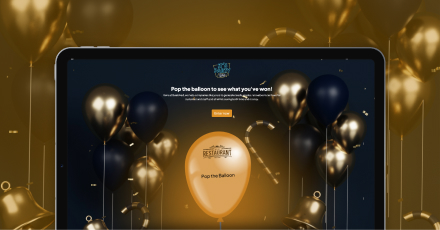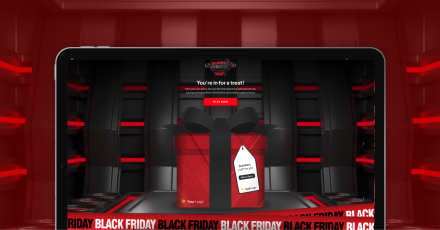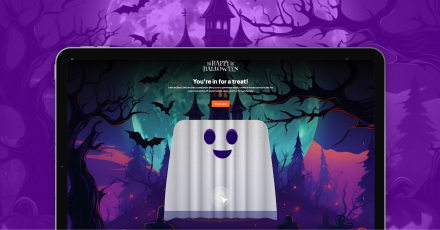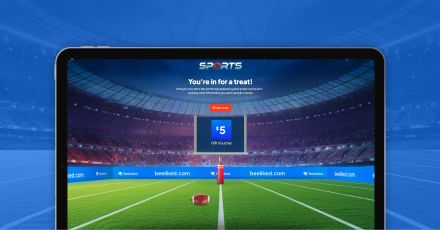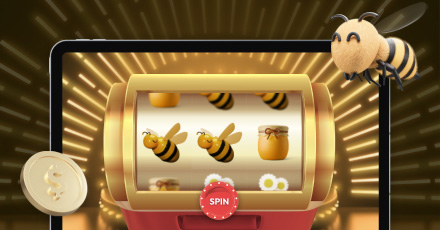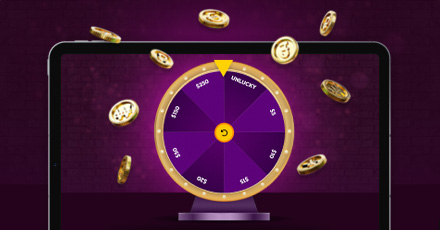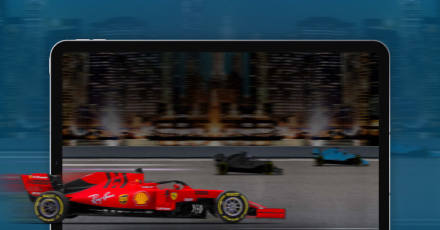If you’re familiar with BeeLiked, you’ll know we’re firm believers in using gamification to enhance customer experience and generate more leads for your business. Not sure how it works? The main goal of gamification marketing isn’t to grab new customers – it’s to get the ones you already have more involved and excited. Gamification adds an extra sprinkle of spice to marketing. It’s all about using gamified promotions (think: spin the wheel, pop the balloon, etc.) to offer a fun and interactive brand experience for your customers. Gamifying your marketing campaign is a fun way to engage your buyers, plus, it leaves a positive brand impression. It’s no surprise that gamification is a huge hit in various industries from retail to real estate – who doesn’t love a fun game? Especially when exciting prizes and rewards stand to be won!
How Can Gamification Help Improve Your Customer Experience?
Games add a natural thrill and applying elements such as points, badges, or leaderboards to your marketing campaign is a fantastic way to create excitement around your brand or product and keep customers returning for more. Everyone loves a good challenge, right? Well, gamification takes that love and turns it into a powerful marketing tool. Enhancing customer experience can be as simple as setting up goals and offering rewards – which can range from earning points to unlocking achievements – and your customers will be motivated and fully engaged. Have a product or service with a bit of a learning curve? Fear not! Incorporate interactive tutorials, quizzes, or simulations to make the learning process not just educational, but downright enjoyable and memorable! Are you looking to harness gamification to improve customer experience? Read on to learn how you can leverage the power of gamification to enhance customer interactions with your brand.
10 Ways to Use Gamification to Enhance Customer Experience:
- Understand Your Audience
To effectively engage your audience, conduct thorough research to gain insights into their demographics and behaviors. Use surveys, social media analytics, and other data sources to gather information about their preferences and habits. This detailed understanding will allow you to create a gamification strategy that resonates with your audience on a deeper level. Consider the diverse interests within your target demographic and design gamified elements that cater to their preferences. For example, if your audience consists of both competitive and collaborative people, incorporate game dynamics that accommodate both styles of engagement. Stay updated on evolving trends and cultural shifts that may impact your audience’s preferences over time.
- Define Objectives

Clearly define your objectives for your gamified campaign. Whether it’s increasing customer engagement by enhancing their experiences, or driving specific behaviors, having clear goals will make your campaign more effective. Your campaign goals should be the roadmap for all your gamification marketing efforts. Without well-defined goals, your strategy may lack focus and fail to deliver the desired outcomes. If you aim to boost customer engagement, tailor your gamification elements to encourage regular interactions with your brand. On the other hand, if your goal is to boost customer loyalty, you might design reward systems that incentivize repeated purchases or long-term commitment.
- Design Engaging Challenges
Create challenges that are enjoyable and aligned with your brand. Make them challenging enough to be interesting but not too difficult to discourage your customers. Incorporating elements that resonate with your target audience, such as relevant themes or trends to retain their interest. Construct a gradual difficulty curve, allowing players to progress and build confidence as they navigate through the challenges. Including a scoring or reward system will also add an element of competition. Offer quizzes, creative tasks, and interactive giveaways to create a memorable brand experience. Ensure that each challenge provides a sense of accomplishment upon completion. Social media is especially great for promoting challenges. Don’t forget to use relevant hashtags to expand your reach.
- Create a Reward System

Develop a rewards system that offers incentives for customers to engage with your brand. Customers are more likely to stay committed to your brand as they accumulate rewards, ultimately boosting retention rates. Offer a customer rewards program with tangible benefits, such as discounts, exclusive access, or freebies, as they promote repeat purchases and motivate customers to continue engaging with the brand. The data collected from customer interactions within the reward system can also be used to tailor customer experiences, ensuring that they feel understood and valued.
- Use Points, Badges, and Leaderboards
Points, badges, and leaderboards are powerful tools for reactivating your customers, driving competition, promoting more engagement, and creating a sense of community among your customer base. One of the key factors that makes gamification so successful is its ability to tap into people’s natural desire for reward and recognition. A point system provides a tangible representation of progress, allowing people to track their achievements and activities. Badges, on the other hand, give users a sense of pride and recognition for achieving specific milestones or taking certain actions. Leaderboards introduce a social element by publicly displaying the top performers and promoting healthy competition.
- Provide Real-Time Feedback

Offer immediate feedback to your customers – real-time feedback can significantly enhance customer experience! Positive reinforcement and acknowledgment of their progress can keep them engaged. Immediate reinforcement also helps in creating more interactive and dynamic customer experiences. It allows businesses to address issues promptly, preventing potential frustration or dissatisfaction. Instant feedback also allows companies to demonstrate responsiveness and attentiveness, reinforcing a customer-centric approach. This helps build a brand’s trustworthiness while also enabling it to adapt quickly to customer preferences, creating a more personalized and tailored customer experience.
- Progress Tracking
Encourage friendly competition among your customers by introducing leaderboards. Offer personalized milestones based on individual preferences or purchase history to make the progress-tracking experience more relevant to each customer. Send regular updates and notifications congratulating customers on their achievements or encouraging them to reach the next milestone to drive more engagement. You could also offer exclusive bonuses or discounts when customers successfully reach a significant progress point to keep them motivated.
- Personalized Experiences

Develop a system that analyzes customer behavior and preferences to provide personalized experiences. Tailor exclusive offers and discounts based on their past purchases or engagement with your platform. This would involve creating customer segmentations and a reward system that appeals to each segment. You may need to offer different types of rewards, such as discounts, and exclusive access for each segment, however, this will ensure that the rewards you provide your customers are meaningful and more relevant to them. Offering rewards that are relevant to your customers will enhance their experience and keep them going back for more. Get in the habit of regularly reassessing and updating your customer data to ensure that your campaign remains aligned with the shifting dynamics of your customer base and encourages long-term loyalty and customer satisfaction.
- Integrate with Social Media
Allowing customers to share their experiences on social media is a great way to boost your gamified promotion and expand your brand’s reach. Social media platforms are also another great source of valuable customer data. You can gain insights into customer behaviors and preferences through their social media interactions. Analyze data related to your gamification strategy so you can refine and tailor your approach to better suit the interests of your target audience. The real-time nature of social media allows you to promptly respond to customer feedback, address concerns, or amplify positive experiences. The wealth of data available from social media interactions can be used to identify emerging trends and stay ahead of market demands, helping you in the continuous evolution of your gamification strategy.
- Accessibility and Inclusivity

Ensure that your gamification campaign is accessible to a wide audience. Consider different demographics, preferences, and abilities to include a diverse range of people. This could mean making language and cultural adjustments to make the content more inclusive or translating the game text into multiple languages. Be mindful of cultural references that may be offensive to certain groups. You might also consider making your game’s visuals adaptable for players with color blindness or other visual impairments by incorporating alternative color schemes or providing options for more color contrast. Implement features like subtitles, captions, or audio descriptions to support players with hearing impairments, so they can fully engage with your campaign.
Take your brand to the next level with BeeLiked! We specialize in creating fun and memorable experiences for your customers through gamification marketing. Our solutions will help you blend game elements into your marketing strategy to reactivate your customers, and generate more leads. We have a variety of ready-made and customizable promotions that will grab your customers’ attention to help your business grow faster. If you’re ready to boost customer engagement and drive actions for success, start your journey through gamification with BeeLiked today.
